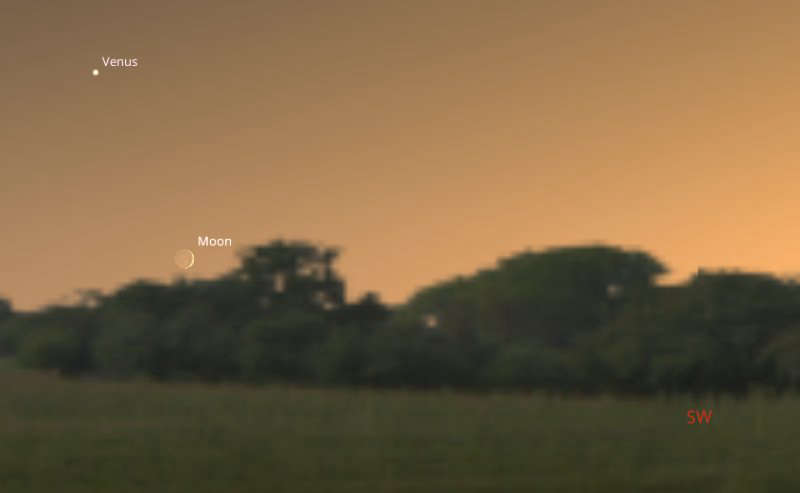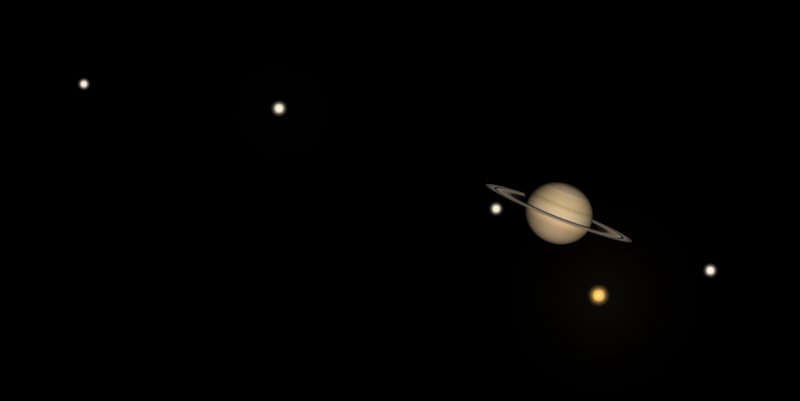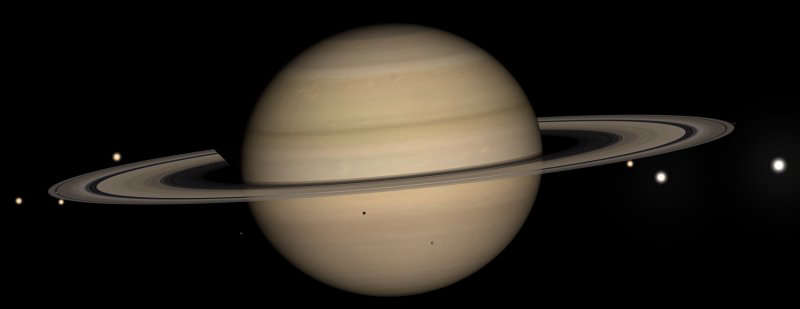
Monday 4th to Sunday 10th November 2024
First of all, a bit of a visual challenge just as it's getting dark on Monday 4th. Look close to the south west horizon around 4.30pm and see if you can spot a thin 9%-lit waxing crescent Moon. A little above and to the left of the Moon will be a very bright planet Venus, shining at a magnitude of about -4.0 so easy to find against the dusk sky.

If you look towards the south west any evening next week in the late evening, Saturn will be easy to spot with the naked eye at a magnitude of around +0.8 but it is not a great time to observe the rings of dust around the planet because their current "end-on" angle to us makes them appear to be very thin.

However this works to your advantage as Saturn's many moons are in the same plane as the rings, so appear to be nicely spaced out in their orbits around the gas giant.

At different times next week, three of Saturn's moons pass in front of the planet and cast a shadow on its surface. Of course you will need a telescope to be able to observe what will look like a tiny black dot on the face of the planet. The offending moons are Titan from 9pm on Monday 4th, Rhea from 11.30pm on Tuesday 5th and Dione from 7pm on Thursday 7th. Because the time is a little earlier on the Thursday, Saturn will be more towards the south that evening.

Saturn is known to have 146 moons and their orbital periods (or the time they take to go around the planet) vary considerably, depending on how far they are away from the planet. If you look at Saturn on the different evenings, the moons will therefore all appear to be in completely different places each time.
www.starsoversomerset.com
Screenshots courtesy of Stellarium
Copyright Adrian Dening and Radio Ninesprings 2024

 Bridge Garage MOT Winners!
Bridge Garage MOT Winners!
 Winter Coat Scheme
Winter Coat Scheme
 Recycling
Recycling
 Ilminster Local Plan
Ilminster Local Plan
 Hate Crime
Hate Crime
 False Fire Alarms
False Fire Alarms
 Dog DNA
Dog DNA








